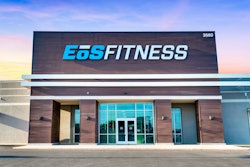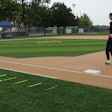For the first time, scientists at the Fraunhofer Institute, Europe’s leading applied research organization, have confirmed that synthetic ice can match the glide of frozen water. Swiss company Glice AG developed a new surface technology that reproduces the unique sensation of skating on real ice—without water or energy.
First contact is crucial
"The first moment is particularly critical when ice skating. High initial resistance hinders the skater's safe start to gliding," explains project manager Prof. Dr. Matthias Scherge from the Fraunhofer Institute for Mechanics of Materials IWM. Therefore, the research initially focused on the first few seconds of gliding.
Measurements under realistic conditions
A special friction measuring device was developed for the project, in which a skate blade glides over polymer samples under realistic conditions. In addition to the frictional forces, the depth of immersion of the blade was also investigated — a parameter that is crucial for assessing gliding behavior. "Only when the blade 'plows' with as little resistance as possible does the light and floating gliding sensation set in," adds the head of the Tribology business unit at Fraunhofer IWM.
Material innovation as the key
The gliding effect is based on a combination of materials: an ultra-stable base made of refined polyethylene and a highly mobile surface layer whose polymer chains offer little resistance to the blade. The skate blades themselves also contribute to the success – precise grinding techniques further improved the result.
From the lab to practice
After numerous adjustments to the plate composition, optimization of the cleaning processes, and the introduction of special conditioning procedures, a quality was achieved that even ice hockey professionals are enthusiastic about. Equally decisive was large-scale production — another step that led Glice to market maturity.
Convincing measurements
The latest laboratory results show friction coefficients of around 0.035 – values that are even slightly lower than those of frozen ice at low sliding speeds. By way of comparison, with a friction coefficient of 1, sliding is impossible, and at 0.5 it feels as if sand has been sprinkled on the surface. Only below 0.1 does gliding become enjoyable – and at 0.05 the authentic gliding experience begins.
Sustainability in action
In addition to its sporting benefits, the technology scores highly in terms of sustainability: neither water nor coolants and electricity is required to operate such a rink. "This breakthrough makes our vision a reality: sustainable skating worldwide – with an experience that is in no way inferior to real ice," explains Viktor Meier, CEO and co-founder of Glice.
About Glice: Glice is the global leader in the development and manufacture of sustainable synthetic ice rinks. Since its founding in 2012, the Swiss company has redefined the skating and ice hockey experience with innovative materials and technologies that do not require water or energy consumption. Today, Glice is represented in over 100 countries and it stands for the highest quality, ecological responsibility, and the vision of making sports and leisure activities accessible in a resource-efficient way. Learn more at www.glicerink.com

































